Hello everyone, I’m Michael Zhang, a Chinese traveler who has journeyed across the world in search of destinations where nature and culture coexist in harmony. Over the years, I’ve found myself drawn not to modern skylines but to landscapes that carry stories of time, belief, and devotion. Mount Heng, or Nanyue, is one such place that commands deep respect. It is not just a mountain—it is a living history, a spiritual legacy that has lasted for thousands of years. In this article, I’ll guide you through Hunan’s Mount Heng, a sacred mountain where Confucianism, Buddhism, and Taoism converge. Drawing on my own travel experiences, I’ll help you uncover the soul of this destination beyond the climb itself.
Summary
Introduction to Mount Heng
Mount Heng, also known as Nanyue, Shouyue, or Southern Mountain, is one of China’s Five Great Mountains (the other four are Mount Tai, Mount Hua, Mount Song, and Mount Heng in Shanxi). The main peaks include Huiyan Peak, Zhurong Peak, Zigai Peak, and Yuelu Mountain, with Zhurong Peak being the highest at 1,300.2 meters.
Mount Heng is a renowned Taoist and Buddhist sacred site, surrounded by more than 200 temples, monasteries, and shrines. Historically, it was a royal site of worship where ancient emperors such as Yao, Shun, and Yu offered sacrifices to heaven and earth. This tradition reflects the mountain’s spiritual significance in early Chinese civilization.
- Address: No. 37, Jinsha Road, Nanyue District, Hengyang City(Apple Maps/Amap)
- Opening hour: Accessible 24 hours; shuttle buses operate from 7:00 AM to 5:30 PM
- Recommended visiting time: 4–5 hours
- Best visiting seasons: All year round
- Ticket prices: 110 CNY
- Ticket purchase: Trip.com Discounts
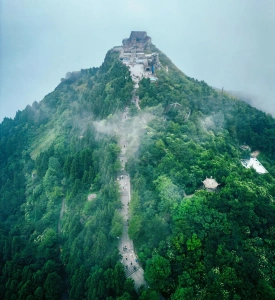
Mount Heng Map
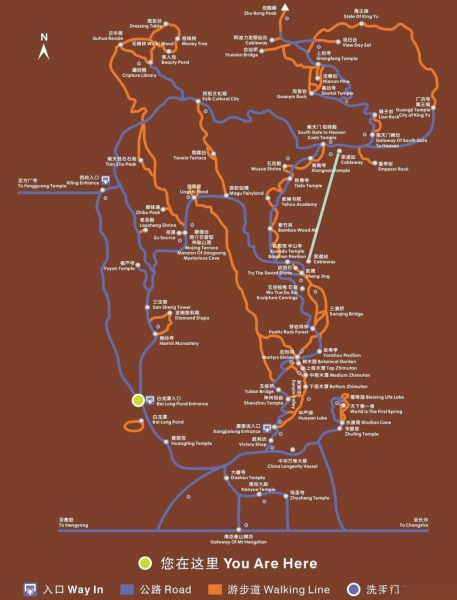
Why You Should Visit Mount Heng
Natural Wonders
Mount Heng, also known as Nanyue Mountain, is famed for its magnificent sea of clouds, where mist surges like ocean waves against the rugged granite cliffs. During sunrise and sunset, the peaks glow with golden light, forming what locals call the “golden summit” phenomenon. Formed by granite fault uplifts, the mountain features a striking terrain and a distinctive microclimate often described as “one mountain, four seasons; ten miles, different weather.” While hiking, travelers experience an impressive shift from temperate to alpine conditions, making the ascent both scenic and refreshing.
Historical and Cultural Value
As the only one among the Five Sacred Mountains known as the “Southern Sacred Mountain (Nanyue),” Mount Heng has long been a site of imperial worship, where Emperor Shun once made his southern inspection. With thousands of years of accumulated culture, Mount Heng stands as a living symbol of Chinese spirituality. As China’s Mountain of Longevity (Shouyue), it is home to both Buddhist and Taoist traditions. Around its slopes lie more than 200 temples and monasteries, such as Nanyue Grand Temple and Fuyan Temple, offering profound insight into the coexistence of multiple faiths throughout history.
Top Things to Do in Mount Heng, Hunan
Main Attractions
Nanyue Mount Heng Archway
Upon entering the Nanyue Scenic Area, the first sight that greets you is the magnificent Nanyue Mount Heng Archway. This grand gateway is not only the landmark of Mount Heng but also symbolizes the entrance to the “Sacred Realm of Nanyue.” Built entirely from white marble, the archway is both elegant and imposing, featuring intricate carvings and majestic proportions. The four gilded characters “南岳衡山” (Mount Heng of the South) were inscribed by a renowned calligrapher, representing the harmony between heaven and humanity—a reminder that climbing Mount Heng is as much a spiritual journey as it is a physical one.
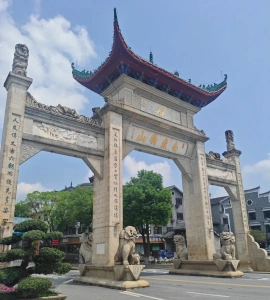
Zhurong Peak
Zhurong Peak is the highest point of Mount Heng, standing at 1,300.2 meters above sea level and known as the “Soul of Nanyue.” The peak is named after the ancient Fire God Zhurong, who, according to legend, nurtured life with fire. It has long been regarded as a sacred place of flame and vitality.
To reach the summit, visitors ascend along a winding mountain trail lined with pine trees and misty clouds. The journey is especially stunning at dawn and dusk. At the top stands the Zhurong Temple, where a statue of the Fire God is enshrined amid curling incense smoke. From the peak, travelers can enjoy a panoramic view of the Hengyang Plain, and on clear days, the rolling sea of clouds creates a surreal, dreamlike vista.
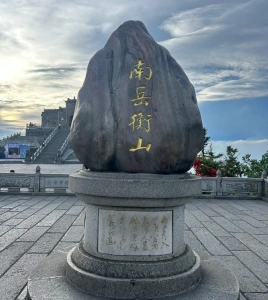
Nanyue Grand Temple
Known as the “Forbidden City of the South,” the Nanyue Grand Temple is the most significant ancient architectural complex in the Mount Heng region and the largest ceremonial temple complex still preserved in China. It was originally built during the Sui Dynasty and later reconstructed throughout the Tang, Song, Ming, and Qing dynasties, covering an area of nearly 100,000 square meters.
Facing south, the temple layout mirrors that of Beijing’s Forbidden City. The main hall, Zhurong Hall, is flanked by auxiliary buildings, stele pavilions, and bell-and-drum towers, all arranged with precision and grandeur. The temple’s incense never ceases, and visitors can appreciate not only the beauty of ancient Chinese architecture but also the harmonious coexistence of Confucianism, Buddhism, and Taoism within its walls. It’s recommended to visit the Nanyue Grand Temple either before or after your Mount Heng climb for a meaningful start or a perfect ending to your journey.
- Additional Ticket Required: 58 CNY (Peak Season) / 40 CNY (Low Season)
- Recommended Visit Duration: About 1 hour
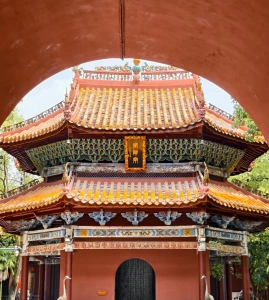
Mount Heng Ticket Guide
Mount Heng requires both an entrance ticket and an eco-bus ticket (44 CNY one-way, 78 CNY round trip). The eco-bus departs from the Visitor Center and takes passengers close to the summit area. Since the mountain road is full of sharp curves, those prone to motion sickness should take precautions. The eco-bus stops at several major attractions, but you must inform the driver in advance if you want to get off before the final stop at Nantianmen (the ride from the Visitor Center to Nantianmen takes about 45 minutes).
Mount Heng Ticket Prices
- Adults: 110 CNY
- Children: 55 CNY (ages 14–18)
- Seniors: 55 CNY (ages 60–65)
- Free Admission: Children under 14 and seniors over 65
Ticket Purchase Options
- Online: Official WeChat account “Nanyue Yima You” or third-party platforms.
- Ticket Purchase: Trip.com Discounts
- Offline: At the Visitor Center.
Recommended Mount Heng Route
The best route is hiking up and taking the eco-bus down, following the Fanyin Ancient Trail, the classic climbing route. The total hiking distance is about 11 km, requiring around 5 hours to reach the summit at Zhurong Peak.
- Hiking Entrance: Shengli Archway
- Bus Boarding Point: Visitor Center
- Trail Route: Shengli Archway → Kangjialong Ticket Gate → Fanxian Pavilion → Huayan Lake → Xiazhi Mutan → Ledao Pavilion → Martyrs’ Shrine → Chuanyan Poetry Forest → Mid-Mountain Pavilion (Xuandu Temple) → Zizhulin Taoist Temple → Xiangnan Temple → Longevity Hall → Nantianmen → Kaiyun Pavilion → Zhurong Peak
Recommended Local Food near Mount Heng
There’s a restaurant at the Nantianmen Service Center, though choices are limited and mainly set meals (about 58 CNY). Along the trail, small snack stalls offer simple bites such as grilled sausages (10 CNY) and tofu (15 CNY). It’s best to bring your own snacks and water for the hike and enjoy a proper meal in town after descending.
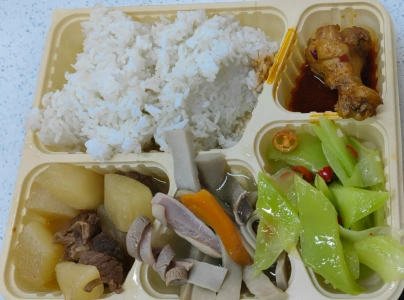
How to Get from Changsha to Mount Heng
Mount Heng is about 140 km from downtown Changsha. The most convenient way is to take a high-speed train to Hengshan West Station, then continue by public transport or rideshare to the scenic area.
High-Speed Train + Shuttle Bus / Rideshare
From Changsha South Station, take a train (approximately 70 CNY) to Hengshan West Station. Exit the station and you’ll find a bus on the right-hand side heading to the Mount Heng Archway (6 CNY, about 15 minutes). From the Archway, it’s another 1.3 km walk to the Visitor Center. If you’re short on time, it’s more convenient to book a rideshare directly to the Visitor Center.
- Route: Changshanan → Hengshanxi
- Train Ticket Link: Click Here
FAQ
Not really. Although the eco-bus can take visitors up to Nantianmen, the final section to the summit involves numerous stone steps, which makes it difficult to navigate with strollers or wheelchairs.
On the left side inside the Visitor Center, there are storage lockers available for 10 CNY.

 English (US)
English (US)
 繁體中文
繁體中文 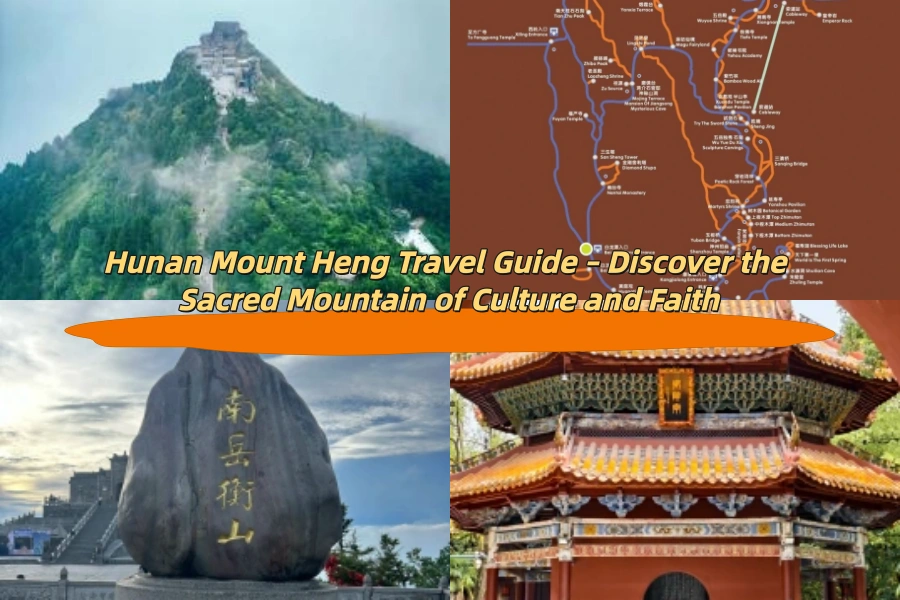
Comment (0)